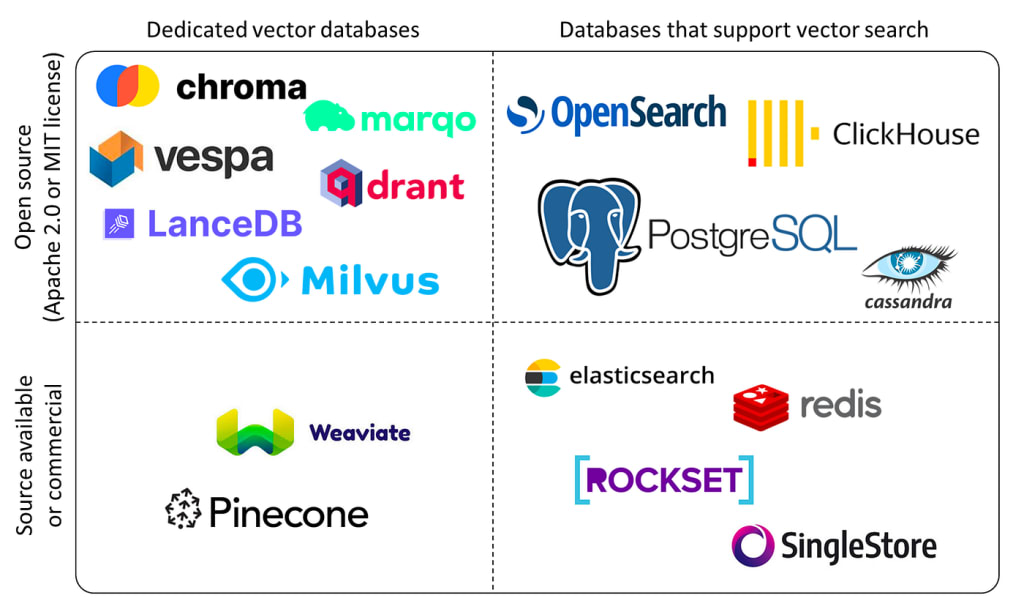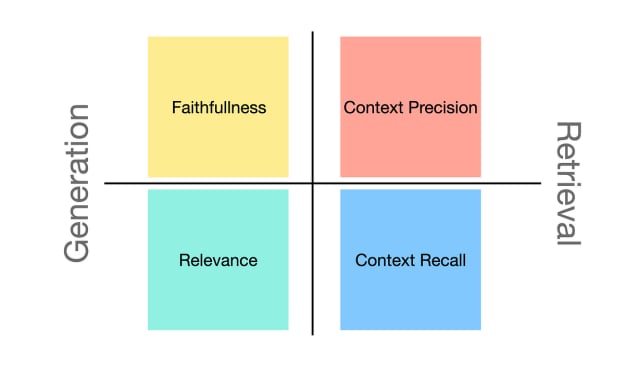How are Pinecone and Chroma different
Pinecone Vector Database and Chroma

In today's data-driven world, the need for efficient and scalable ways to manage and query large datasets is more critical than ever. Vector databases have become quite significant in artificial intelligence, serving as the backbone for efficient data storage and management in neural network applications.
Pinecone and Chroma have received widespread notice for their novel approaches to vector data management. Pinecone Vector Database is known for its scalability and smooth integration capabilities, making it a top choice for businesses looking for reliable performance and ease of use. While Chroma stands out for its flexibility and advanced analytics, making it interesting to developers looking for data customization and deep insights.
This blog intends to provide a comparison of Pinecone and Chroma, highlighting their key differences and assisting you in making an informed decision on which platform is ideal for you.
Pinecone Vector Database
Pinecone, known for its emphasis on speed and managed services, distinguishes itself with its high scalability and real-time search capabilities. This cloud-based managed vector database has a user-friendly interface, making it an excellent alternative for enterprises wishing to develop and deploy machine learning applications smoothly. Pinecone's indexing and search capabilities enable it to create and deploy large-scale machine learning applications that handle and analyze complicated data seamlessly.
Pinecone excels in the area of real-time search. Consider looking through a large image library: Pinecone can quickly locate related photos, making it excellent for applications such as product suggestions and personalized search engines. Pinecone Vector DB is the most popular vector database, renowned for its speed and index building capabilities. Internal search and retrieval are performed using Approximate Nearest Neighbor (ANN) and various metrics such as cosine distance.
Pinecone offers both a paid licensing option and a free-tier plan. However, in the free tier, users are restricted to creating one index and one project in a single starter pod.
Chroma Vector Database
Chroma takes a different approach, offering an open-source platform that grants you complete control over your data. This flexibility empowers you to customize queries and perform complex data manipulations, making it a valuable tool for research and development projects involving vector data.
Another perk of Chroma is its local testing capabilities. Setting up Chroma on your local machine is a breeze, allowing you to experiment and prototype applications before deploying them to a larger scale.
While Chroma can scale, it might not keep pace with Pinecone for exceptionally large datasets. Additionally, managing the infrastructure falls on your shoulders, which requires some technical expertise. Finally, Chroma doesn’t currently offer a free tier like Pinecone.
Key Differences
Architecture
Pinecone
Pinecone is quite famous for its scalability and its ability to manage large amounts of data. Its ability to scale horizontally makes it more flexible and cost-effective. Pinecone is a fully-managed cloud-based vector database emphasizing high scalability and real-time search capabilities. It uses Approximate Nearest-Neighbor (ANN) search algorithms with metrics like cosine similarity to enable fast and efficient search and retrieval.
Chroma
Chroma is an open-source platform optimized for local development environments. It provides flexibility in querying and is designed for efficient storage solutions, making it lightweight and adaptable for various use cases. It supports embedding models and performs similarity searches using metrics like cosine similarity or Euclidean distance.
Use Case
Pinecone
Pinecone is ideal for real-time search applications like Generative AI, product recommendations, and personalized search engines.
It is suitable mostly for enterprises that are into AI and Machine Learning and they need robust performance along with scalability. It also offers enterprise level security so that companies dont need to worry about compliance.
Chroma
Chroma is best suited for local management and prototyping at a smaller level compared to Pinecone. It is more suited to education sectors or research institutions where local data management is important.
Integration
Pinecone
Pinecone offers seamless integration with various machine learning frameworks and tools, making it easy to embed into existing workflows. It provides well-documented APIs for smooth interaction with other systems. Its managed service model simplifies setup and maintenance, allowing for quick deployment in production environments.
Pinecone supports integrations with major cloud platforms, ensuring compatibility with enterprise infrastructures.
Chroma
Chroma supports integration through its SDKs for Python and JavaScript, catering to developers working in different environments. Its open-source nature allows for extensive customization and adaptation to specific project needs.
The platform facilitates local development and prototyping, enabling easy testing before scaling up. Chroma's flexible querying capabilities enhance its integration potential with diverse applications.
Benefits of Pinecone
Pinecone's real-time search performance is extremely useful for applications that require speedy and effective searches, such as image or document retrieval systems.
Large-Scale AI Deployments: Pinecone's scalability and managed services are beneficial to businesses that must implement and manage large-scale AI models in production settings.
High Security and Compliance: Organizations in finance, healthcare, and other areas with stringent security requirements would benefit immensely from Pinecone's enterprise-grade security and compliance with SOC 2 and HIPAA regulations.
Benefits of Chroma
Chroma’s flexibility allow institutions with research departments to benefit from its local development optimization. It’s management of both audio and video content also allows companies to leverage Chroma’s efficient storage capabilities.
Interactive learning programs of different educational institutes require customizable data management which can be useful for them especially by using Chroma’s open-source nature and local deployment options.
Conclusion
While Pinecone and Chroma serve as powerful options, it's also worth exploring other emerging solutions like Vectorize.io. Vectorize.io is designed to streamline the management and querying of vector data with a focus on simplicity and integration. Its innovative approach provides an additional layer of choice for developers seeking efficient vector data handling in various applications.
In summary, whether you need the scalability and managed services of Pinecone, the flexible querying and local development capabilities of Chroma, or the streamlined functionality of Vectorize.io, the right vector database can significantly enhance your project's performance and efficiency. Evaluating these options against your specific requirements will ensure you choose the best tool for your needs.
About the Creator
Enjoyed the story? Support the Creator.
Subscribe for free to receive all their stories in your feed. You could also pledge your support or give them a one-off tip, letting them know you appreciate their work.





Comments
There are no comments for this story
Be the first to respond and start the conversation.